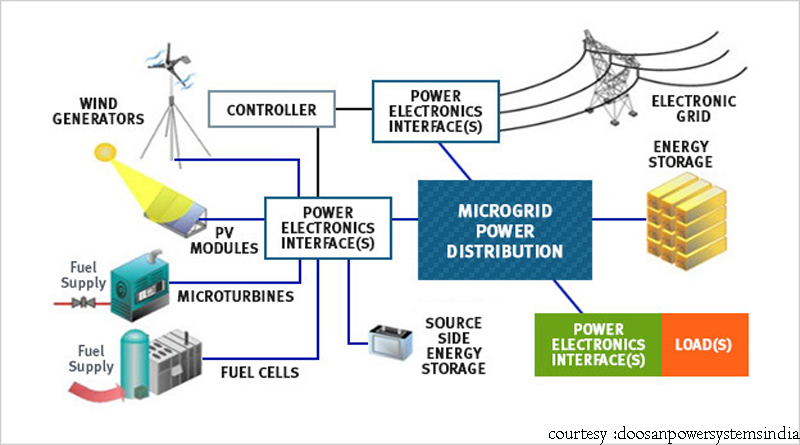

Earlier this year the government realised India’s need to invest in storage capacity, hence after the Solar and Wind Mission the government planned to launch a National Energy Storage Mission. The storage expert committee set up the by the Ministry of New and Renewable Energy (MNRE), adhered to its timeline and has formed the draft of the National Energy Storage Mission, which aims to kick start India’s storage mission.
The set target for 2022 is for India to have a renewable capacity of 175GW out which 100GW is solar and 60GW is wind. The Bloomberg New Energy Finance Outlook 2017 estimates renewables to generate 49% of India’s power by 2040. Currently 1/5th of the energy generated in the country stems from renewables with a capacity of 65GW, India aims to have a storage capacity of 70GW by 2022.
“The draft sets a realistic target of 15-20GWh of grid connected storage within the next five years”, quoted Debi Prasad Dash, director, India Energy Storage Alliance (IESA). The current power grids in our country do not have storage facilities, leading to problems while integrating renewables to the grid due to their intermittent nature.
The draft submitted to the ministry is to be released in the next few months for public feedback. “The draft focuses on seven verticals: Indigenous Manufacturing; Assessment of Technology and cost trends; Policy and Regulatory Framework; Financing Business Model; Market Creation; Research and Development; Standards and Testing; Grid Planning for Energy Storage”, as per the statement released by Mr. Dash (director, IESA).
The basic problem with wind and solar energy is that the source of power is dependent on time as well as the availability of the energy sources. India’s peak time for electricity consumption is in the evenings when there is no sunlight available and this would makes it impossible for the solar plants to coincide the peak electricity supply to the peak electricity demand without storage. As per P.C. Pant a senior scientist with MNRE, only 10% of solar power can be injected into the grid without the use of storage.
Keeping the intermittent quality of renewables aside, as the share of renewables in the grid increase, the grid will eventually start rejecting the power after the certain limit, leading to energy wastage; as seen in the case of Tamil Nadu in 2016.
Mr. Dash stated that the Central Electricity Authority of India was considering making a regulation that would mandate large-scale solar projects (100/200MW) to have storage. However, industry players have reservations as the Solar Energy Corporation of India (SECI), NTPC as well as the NLC have all cancelled nine tenders regarding storage in 2017. The reason was due to the solar prices plummeting down to Rs.2.33 KWh. The agencies were unwilling to add storage, as it would cause the solar costs to go up to an average of Rs.10 KWh, which would make it unattractive to distributors. The SECI however, has stated that it will issue another tender for its Andhra Pradesh plant of 160MW by the end of July, however one would only have to wait and see if it will come to fruition after last years fiasco, where 13 developers showed initial interest in the Andhra Pradesh Project before it finally got scrapped.
Another option of course is for Hybrid solar-wind projects, where solar works in the daylight hours, and wind power in the evenings, when wind speeds usually picks up in coastal areas. These hybrid set ups, with added storage could be very effective, with the next level of tech innovations.
It is important for India to look beyond the capital expenditure costs and take into account the life-cycle costs caused by grid instability and distribution losses. Currently, India manufactures no lithium ion battery (storage) of its own, forcing it to attain storage units at higher costs from international manufactures. Going forward, it will be interesting to see how the draft will promote the manufacturing of indigenous batteries.
The National Energy Storage Mission draft is definitely a step taken in the right direction by the government but one can only speculate its effectiveness when it’s officially released to the public for review.
In a significant move toward advancing green energy and industrial growth in the state, Himachal…
Golabl chemical conglomerate BASF has announced that its now offering the world’s first biomass-balanced polyethersulfone…
In a crucial stint to bolster the biogas sector and sustainable dairying in the country,…
TotalEnergies SE has received approval to proceed with its Middlebrook solar and battery project in…
Andhra Pradesh Chief Minister Chandrababu Naidu has inaugurated the Rs 1,000-crore green hydrogen plant of…
The BITS Pilani has developed an innovative solution for managing landfill leachate, domestic septage, and…